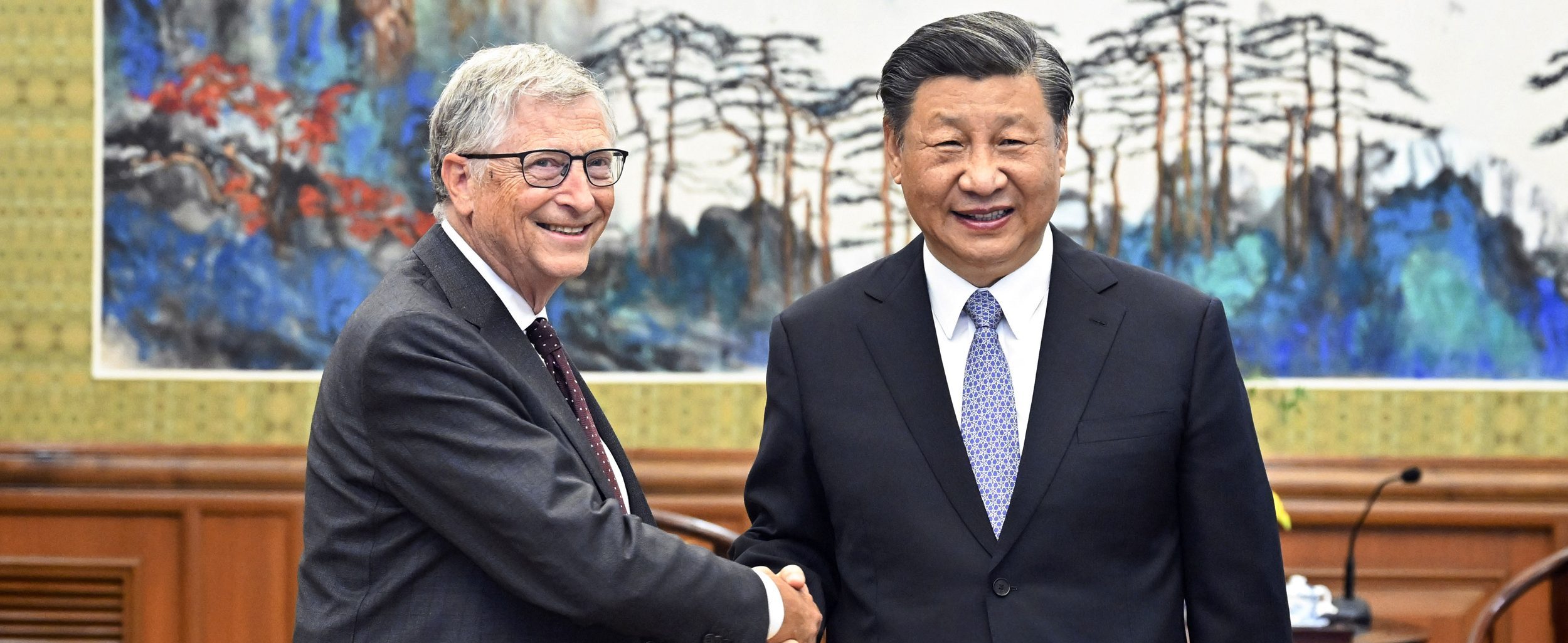The “secret deal” that Western media never tell you in China’s BRI

How significant is the infrastructure construction in the Belt and Road Initiative?
We know that the content of the Belt and Road Initiative is very extensive, but the core is still infrastructure construction. In terms of investment scale, construction volume, cooperation potential, and attention received, infrastructure construction is essential. The achievements it made in the past decade are also the most significant. It can be said that infrastructure construction is the most distinctive label of the Belt and Road Initiative.
Infrastructure construction includes various aspects such as energy, transportation, communication, water conservancy, and municipal services. Among them, the investment volume in energy and transportation is the largest. Taking last year as an example, they accounted for approximately 32% and 21% respectively.
China is now the main builder of this infrastructure construction, and Chinese state-owned enterprises are the main force. The main method of construction is engineering contracting. The main financing model is policy-based and development-oriented loans provided by Chinese financial institutions, mostly guaranteed by the host countries. Over the past decade, the turnover scale of contracted projects in countries along the Belt and Road has reached approximately $600 billion.
Why is China’s infrastructure construction successful?
China’s infrastructure construction is indeed successful, and this is internationally recognized. In fact, China even has a nickname, “Infrastructure Maniac.”
Generally speaking, infrastructure construction requires a large investment scale, strong system integration, high technology, long supply chains, a long construction period, and a high level of construction (requiring large-scale construction machinery). Many countries, especially developing countries, face significant infrastructure gaps but lack the capacity to carry out such projects. This is precisely where China excels.
China has clear comparative advantages in infrastructure construction. Compared to most developing countries, China has a complete range of industries, strong engineering design and construction capabilities, robust production capacities for equipment and raw materials, strong financing capabilities, and extensive construction experience. China also has cultivated a highly capable and skilled workforce in the infrastructure industry. The Engineering News-Record (ENR), a prominent American magazine, annually ranks the top 250 international contractors globally, and China consistently has a substantial presence. In the 2022 list, China had 79 companies, ranking high on the list.
Why does China have such strong infrastructure capabilities? This is related to China’s national conditions.
China has a vast territory with diverse topography and climate. Undoubtedly, China encounters various characteristics and challenges of infrastructure construction found worldwide. China has undergone extensive tests and experiences. Additionally, since the Reform and Opening-up policy, China has attached great importance to infrastructure construction, and relevant capabilities have been refined and developed.
Compared to developed countries, in addition to the aforementioned advantages, China also has comparative advantages such as low construction and operation costs, low financing costs, high construction efficiency, and an abundance of engineering and industrial workers with technical expertise. What’s more, the Belt and Road Initiative does not impose any political conditions. I believe these aspects are unmatched by many countries.
Who benefits from the infrastructure construction of the Belt and Road Initiative?
First and foremost, the partner countries involved in construction benefit. The interconnected infrastructure significantly improves their production and living conditions, addressing long-standing bottlenecks and constraints. Over the past decade of the Belt and Road Initiative, we have solved many problems. For example, many places that previously suffered from power shortages now have electricity, and areas with limited communication access no longer require climbing trees or mountains to make a phone call. I remember during the inauguration ceremony of a power plant in Sri Lanka in 2016, the then President of Sri Lanka immediately announced a nationwide reduction in electricity prices – the results were that evident.
The opening of the China-Laos Railway has allowed Chinese citizens to enjoy more affordable durians, and Thailand has experienced a huge increase in durian sales. These are clear examples of win-win situations. The opening of the China-Laos Railway not only solves transportation and logistics issues but also promotes industrialization and urbanization along the railway line. In the coming decade, we will witness these developments again. The Ethiopia-Djibouti Railway, which officially commenced commercial operations in 2018, has already led to the establishment of more than ten industrial parks along the railway line.
China also benefits from the Belt and Road Initiative, without a doubt. On one hand, it unleashes China’s construction capabilities, driving exports of equipment and materials. On the other hand, China has made large foreign investments now, and weak infrastructure in some countries often hinders these investments. Therefore, the infrastructure construction in these regions also benefits Chinese investment enterprises.
Western developed countries also benefit from the initiative, and we must be clear about this. On one hand, the interconnected infrastructure reduces trade costs between Western countries and their partner countries, improving their investment environment. On the other hand, it stimulates the export of equipment, materials, and even high-end services from these countries. In fact, multinational companies from the West benefit the most from these developments, but this aspect is rarely discussed – many of the equipment used in our construction projects are niche. Western companies make a fortune from it and keep a low profile.
Furthermore, the entire world benefits. The interconnected infrastructure promotes global connectivity, which I believe is an essential prerequisite for economic globalization. Moreover, the joint construction of the Belt and Road Initiative has received global acclaim and has had a multiplier effect.
After the proposal of the Belt and Road Initiative, it garnered the attention of Western countries. Out of competition, they also put forth similar initiatives to promote infrastructure construction. These include initiatives such as the Blue Dot Network plan by the United States, Japan, India, and Australia, the B3W initiative (Build Back Better World) proposed by the G7, the European Union’s Global Gateway plan, and the India-Middle East-Europe Economic Corridor (IMEC) proposed by the United States and India during the G20 summit in September. I believe these initiatives are largely stimulated by the Belt and Road Initiative.
What’s the possible plan for the next phase of the Belt and Road Initiative?
First, it aims to promote the internationalization and diversification of financing entities, as well as diversify financing models. Considering that the opportunities of the Belt and Road Initiative belong to the world, we should share these opportunities with brother countries and enterprises globally. It is also important to reduce China’s financing pressure and financing risks.
Second, it involves engaging in third-party market cooperation with developed countries. Third-party market cooperation is symbiotic with the Belt and Road Initiative. In order to provide channels for the participation of developed countries such as the United States and Europe in the Belt and Road Initiative, we have put forward the concept of “third-party market cooperation.” This cooperation can promote complementary advantages and mutual benefits in infrastructure construction between China and foreign countries. To a large extent, it is a strategy of sharing opportunities and diversifying risks.
Third, the focus will be on the construction of infrastructure connectivity in China’s neighboring regions. Currently, the infrastructure in our neighboring regions is relatively weak, but it has great potential. In other words, the level of connectivity in our neighboring regions has not been fully developed yet, and it’s a bit of a blind spot. The case of the China-Laos Railway demonstrates the significant importance of regional connectivity, so there is still much work to be done. The China-Kyrgyzstan-Uzbekistan railway has already started. Recently, our Russian friends mentioned that although China has such a long border, there is no direct port of entry in the western regions of China for China-Russia trade, which directly affects the opening of the China-Europe freight trains. Currently, there are only two ports of entry, and they are heavily congested. During this summit, it has been proposed to open a third port of entry, namely the border port between China’s Tacheng and Kazakhstan, but it still requires passing through Kazakhstan. If a port of entry is directly opened in the Altay region, the China-Europe freight trains would bypass one country, greatly improving operational efficiency. I believe these are all areas that need improvement.
Back to the China-Laos Railway, in the future, we need to strengthen connectivity with Laos, Cambodia, and Thailand. By doing so, the role of the China-Laos Railway can be further enhanced, strengthening the railway network in the Indochina Peninsula and closely linking it with the Eurasian railway network. Chinese people will be able to travel to Singapore, Malaysia, and Thailand by high-speed rail. To achieve these goals, we need to build a substantial amount of infrastructure in our neighboring regions, which aligns well with the new development pattern we are constructing.
Fourth, infrastructure construction should prioritize environmental sustainability, taking into full consideration energy conservation, environmental protection, and ecological preservation. In this regard, we have proposed the concept of “green infrastructure.”
(For the full article please check: https://www.guancha.cn/zhaidongsheng/2023_11_02_714196.shtml )





